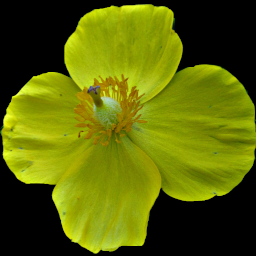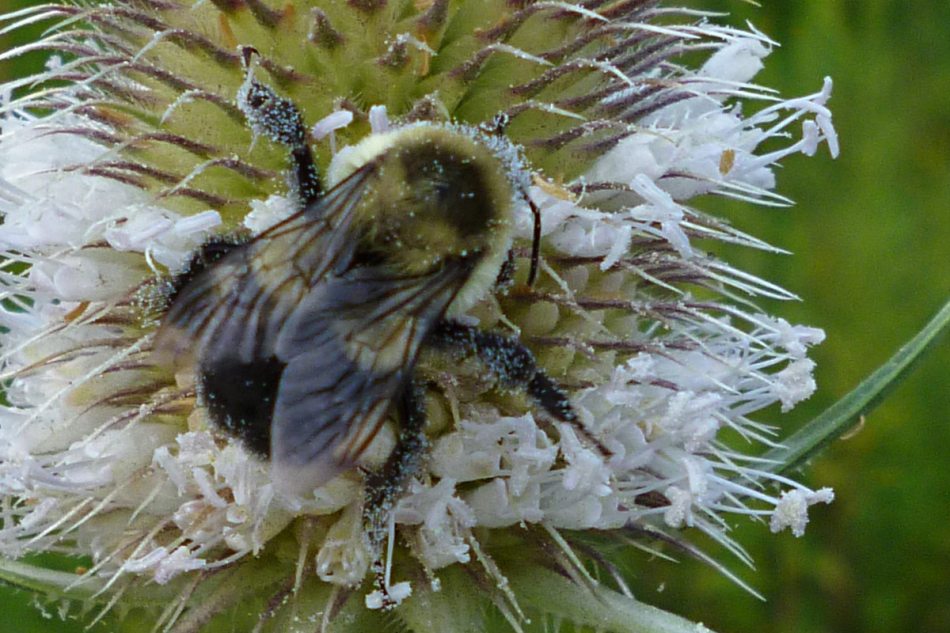 Very similar to the ordinary Teasel (Dipsacus fullonum), but with white flowers rather than pink ones. In Gray’s time it was known in the North American wild only around Albany, but has since spread from New York to Pennsylvania and much of the Midwest. In Pittsburgh, it seems to be established especially along long-distance expressways, with large stands along Interstate 79 in Robinson Township and more along the Pennsylvania Turnpike; these grew in a debris-strewn vacant lot just off the Pennsylvania Turnpike in Cranberry. They may be thorny and destructive weeds, but they are favorites with bumblebees, as we see above.
Very similar to the ordinary Teasel (Dipsacus fullonum), but with white flowers rather than pink ones. In Gray’s time it was known in the North American wild only around Albany, but has since spread from New York to Pennsylvania and much of the Midwest. In Pittsburgh, it seems to be established especially along long-distance expressways, with large stands along Interstate 79 in Robinson Township and more along the Pennsylvania Turnpike; these grew in a debris-strewn vacant lot just off the Pennsylvania Turnpike in Cranberry. They may be thorny and destructive weeds, but they are favorites with bumblebees, as we see above.
Gray describes the genus and the species:
DÍPSACUS [Tourn.] L. TEASEL. Involucre many-leaved, longer than the chaffy leafy-tipped bracts among the densely capitate flowers; each flower with a 4-leaved calyx-like involucel investing the ovary and fruit (achene). Calyx-tube adherent to the ovary, the limb cup-shaped, without a pappus. Corolla nearly regular, 4-cleft. Stamens 4, inserted on the corolla. Style slender.—Stout and coarse biennials, hairy or prickly, with large ovoid-ellipsoid heads. (Name from dipsen, to thirst, probably because the united cup-shaped bases of the leaves in some species hold water. )
D. laciniatus L. Leaves pinnatifid or bipinnatifid, finely and rather conspicuously ciliate; leaves of the involucre lance-linear, spreading, usually shorter than the head. — Established at Albany, N. Y. (Peck). (Adv. from Eu.)


One response to “Cut-Leaf Teasel (Dipsacus laciniatus)”
[…] Pittsburghensis we borrow this picture of a very happy bumblebee bathing itself in the pollen of a Cut-Leaf Teasel (Dipsacus laciniatus) in Cranberry […]